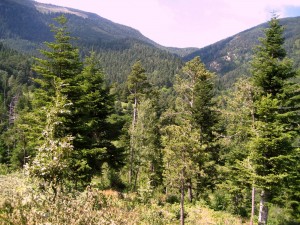Recent changes in climate registered globally during the last decades have the capacity to alter the distribution and population dynamics of tree species. However, populations located at the rear edge of species’ distribution might harbour important genetic resources containing local adaptations to drought, which could be of key importance in a warmer world and with more frequent drought events. Researchers from the Institute of Natural Resources and Agrobiology in Seville (IRNAS), the Pyrenean Institute of Ecology (IPE), the Center for Ecological Research and Forest Applications (CREAF) and the Universities of Córdoba (Spain) and Stirling (UK) have been collaborating in a study aimed to explore the response of silver fir (Abies alba) seedlings from eastern and western Pyrenean populations to the temperature and drought rise expected for the coming decades.
Results of this experiment revealed that the two provenance regions had a differentiated genetic pool. Overall, warming and drought rise diminished seedling survival but, however, seedlings from the eastern Pyrenees (which are older the western populations in ecological time) showed some physiological differences which were translated into higher tolerance to environmental stress. These differences could be of strong importance in order to improve the population health of Pyrenean silver fir forests under a global change scenario.
Results from this study have been recently published on the journal Tree Physiology:
Matías, L., González-Díaz, P., Quero, J.L., Camarero, J.J., Lloret, F., Jump, A.S. 2016. Role of geographical provenance on the response of silver fir seedlings to experimental warming and drought. Tree Physiology. doi:10.1093/treephys/tpw049

